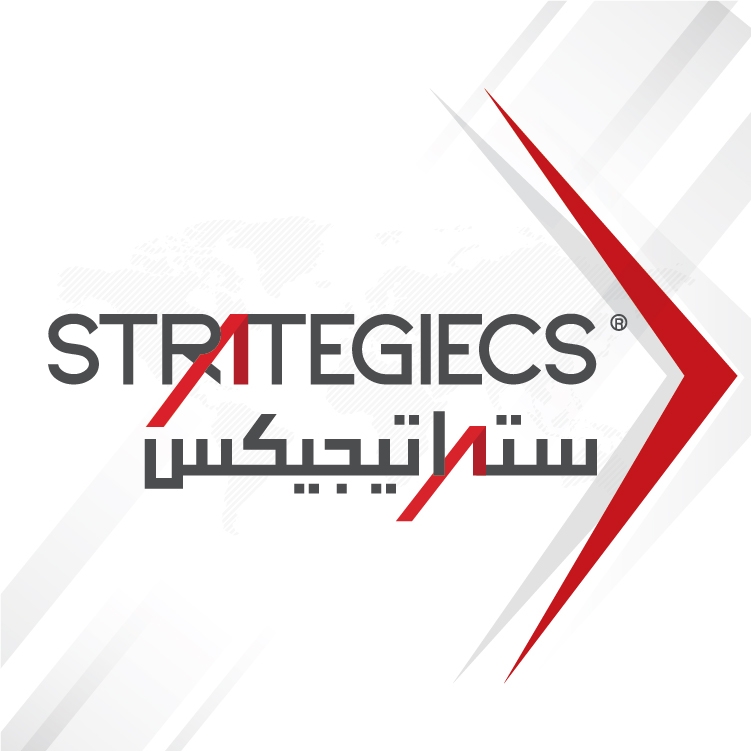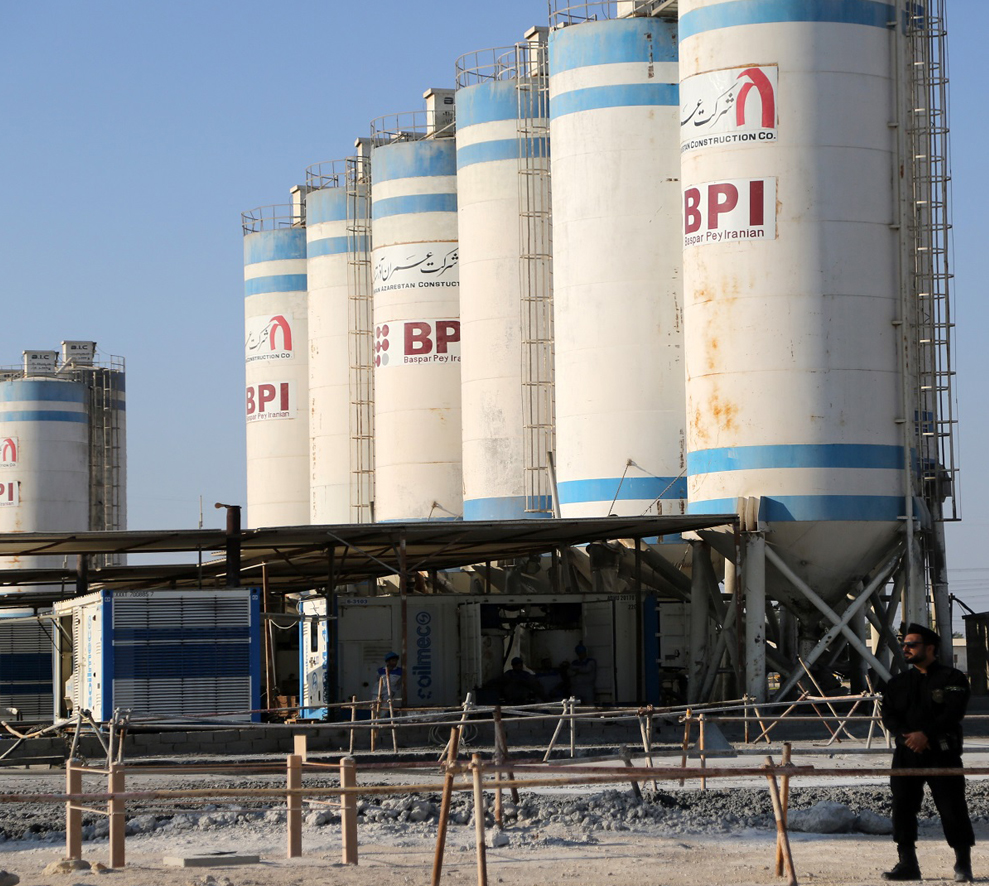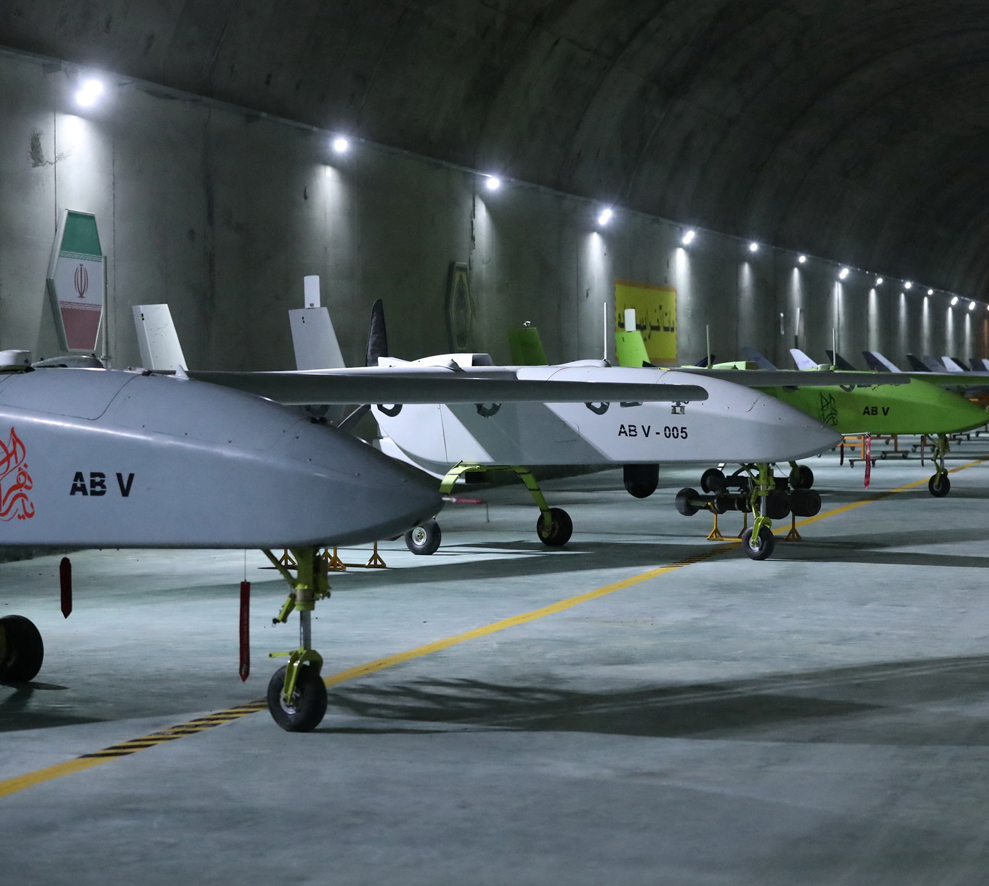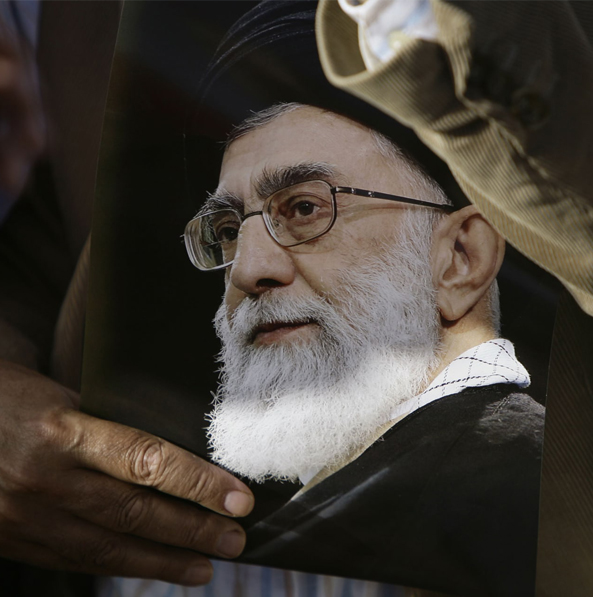Iran completed the Zulfiqar-1400 drills at a sensitive time as it prepares for crucial rounds of nuclear talks in Vienna. Although these drills occur annually, they should not be considered routine exercises to increase operational readiness. In depth, they carry political messages aimed at goals that are at the heart of Iranian foreign policy concerns.
Before discussing these messages, it is necessary to highlight some of the military aspects of these drills, which can be summarized as follows:
(These aspects were noted based on the statements of the drills’ Spokesman Rear Admiral Seyed Mahmoud Mousavi; the Air Defense Force commander, Brigadier-General Alireza Sabahifard; the Islamic Republic News Agency “IRNA”, and Fars News Agency)
1- The drills covered an area of more than one million square kilometers from east of the Strait of Hormuz, through the Sea of Oman, and up to the northern Indian Ocean, making it one of the largest drills ever.
2- The drills were conducted with the participation of all four branches of the armed services: the land forces, the air force, the navy, and the air defense forces. The number of troops that participated in the drills was not disclosed, but several land, sea, amphibious and air formations and vehicles were involved. The official statements focused on the effectiveness of the command and control systems and the success of the drills in communications and coordination functions between the various forces participating in them. In other words, the drills included electronic warfare tasks critical to determining the strength of armies.
3-The Air Force performed aerial refueling operations, and reconnaissance drones such as Ababil-3 and Muhajir-4 were used, not to mention manned reconnaissance aircrafts that flew at high and low altitudes simulating evading radar detection.
-%D8%B0%D9%88-%D8%A7%D9%84%D9%81%D9%82%D8%A7%D8%B1.jpg)
4- It is reported that a new generation of young personnel is being involved in conducting flights and operating air defense systems, emphasizing that the current good performance of the Iranian army will not remain satisfactory over time. According to official statements, this calls for changing methods and maintaining technological progress in line with future expectations.
5- The Islamic Revolutionary Guard Corps and its various formations were absent from these drills. However, this is not unusual with these drills. In other words, the IRGC was not excluded and marginalized despite the reports about an intense competition between the two main components of the Iranian armed power: the Army and the IRGC. However, this does not mean there is no such competition between these two agencies, as numerous reports and evidence have demonstrated their incompatibility, especially when it comes to supporting armed groups in the Middle East and interfering in management of civil affairs, such as the economy and justice system.
6- Before these drills, the Iranian air defense conducted other training exercises in conjunction with the IRGC’s Air Force called “Defenders of Velayat Sky 1400”, which was the biggest in the field of air defense, covering an area equal to half of Iran, or 800,000 square kilometers. The drills also unveiled a newer, smaller version of the Bavar-373 missile system that can track and hit several targets at the same time, and can be operated on warships. Finally A large-scale missile attack was also simulated during the drills in an effort to increase readiness and form layers of safe air defense. According to the official statements, all the systems used in the “Defenders of Velayat Sky” drills were home-made.
Political Timing
As can be seen from the operational aspects of the recent drills, Tehran is displaying its power in a manner that sends messages to the region and the world. Even the drills' name carries a connotation in Islamic culture: Zulfiqar refers to the sword that Prophet Muhammad (PBUH) gave to Ali bin Abi Talib during the battle of Uhud and which Ali used to defend him when the prophet was surrounded by enemy fighters.
As for the number (1400) used in the Zulfiqar and Velayat Sky drills names, it refers to the Hijri year 1400, which corresponds to the Gregorian calendar year 1979, the year of the "Islamic Revolution" which ended the Shah's rule and established the current Iranian political system.
Thus, Iran is moving forward with its political approach based on pushing escalation to high levels so that the other side will make concessions. By escalating, Tehran hides its latent desire to resolve major outstanding crises, meaning that what it is doing and saying is related to “improving the terms of negotiation” in many hot files.
The most notable of these files are the nuclear negotiations, although it is not clear yet if they will take place, as Tehran refuses to enter into new negotiations that lead to a new nuclear deal. Instead, it calls for negotiation of the mechanisms to return to the previous agreement. Meanwhile, Washington wants a stronger and longer-term agreement, because the Joint Comprehensive Plan of Action (JCPOA) signed in July 2015 between Iran and the P5+1 countries, also known as the nuclear deal, will be valid for 15 years after which Tehran will no longer be bound by its nuclear obligations.
The next round of nuclear negotiations or “nuclear talks” (The Iranian Foreign Ministry uses the term “talks” instead of “negotiations”, indicating that the outcome will not be a new agreement) will be crucial, since it will be the first round that takes place after the Iranian President, Ebrahim Raisi, assumed his constitutional powers, amid fears that the hawkish wing might take over these negotiations. Raisi reportedly transferred the power of supervising negotiations from the Ministry of Foreign Affairs, which has an open reformist orientation, to the Supreme National Security Council, which includes conservative figures who tend to insist on their views, and consider security issues and foreign policy as “red lines” that should not be given up without a “precious” return.
Away from being influenced by Iranian propaganda, and based on political psychology, states and societies that realize their power generally do not brag about it. Therefore, the Iranian show of force conceals strategic weaknesses that afflict the state as a whole, which can be summarized as follows:
First, the "maximum pressure" policy and the Coronavirus pandemic have exhausted the Iranian economy, and official data demonstrate an unprecedented decline in economic indicators. A report issued by the International Institute for Iranian Studies in October 2021 provides a thorough view of Iran's societal economy: Over half of the Iranian population lives below the poverty line, half of which (i.e. a quarter of the population) lives in extreme poverty in which they cannot fulfill the basic necessities of life. Furthermore, the unemployment rate has reached about 30% after the pandemic wiped out 1.4 million jobs.
As for the inflation rate, it has been recording cumulative record levels on a monthly basis, resulting in the collapse of Iranians’ purchasing power. The root cause of this crisis lies in the collapse of the value of the Iranian riyal against the US dollar, and the Iranian government's inability to find markets willing to “take the risk” and do business with it given the US sanctions targeting anybody dealing with Iranian entities in most economic sectors.
Observers agree that the sanctions policy pursued by the administration of former US President Donald Trump is not procedural with specified goals, but rather comprehensive with the goal of weakening, or even ending, the control of the ruling political system in Iran.
Second, the maximum pressure campaign agains Iran has reached its regional influence areas. For example, the recent legislative elections in Iraq have demonstrated a clear decline in Iran's political presence, as the number of seats won by electoral lists originating from its military allies has dropped. In Lebanon, the situation has been exacerbated by the collapse of the Lebanese pound against the US dollar, which is caused by the state's inability to fulfill its obligations towards international creditors, as well as the repercussions of the "accident" at Beirut's port, which caused chronic political tensions in the country.
In a video interview before the formation of the Lebanese government, the now Minister of Information, George Kordahi, criticized the Saudi role in Yemen. Since then, Lebanese-Gulf relations have been experiencing a severe crisis that is not limited to the political aspect. In addition to withdrawing ambassadors from the country, it partially affected Lebanese expatriates in Gulf countries, with estimates that services of some Lebanese workers in the Gulf will be terminated. For example, al-Qabas newspaper reported that the Kuwaiti Ministry of Interior had suspended all visas for Lebanese nationals who wish to visit Kuwait. In parallel with this measure, the Prosecutors in Kuwait detained 10 Lebanese on charges of financing Hezbollah.
In Syria, the Iranian presence is under pressure at many levels, as it appears that Russia and Iran are engaged in a secret competition for economic and geopolitical “spoils”. Somehow this competition is linked to Israeli security concerns regarding Iranian military presence, especially close to the Syrian-Israeli border.
Therefore, there is an official and popular trend in Syria that believes it is necessary to reduce the Iranian presence to the minimum as a prelude to Damascus regaining sovereignty in the country and putting an end to the excessive foreign interference in Syrian affairs.
Some Arab capitals have recently initiated contacts and initiatives with Damascus under an economic cover aimed at the Syrian people. According to observers, this move towards Damascus is intended to crowd out the Iranian presence in Syria and impede its efforts to keep and sustain the current situation in Syria, which gives Tehran a clear advantage.
.j-%D8%B0%D9%88-%D8%A7%D9%84%D9%81%D9%82%D8%A7%D8%B1-pg.jpg)
Third, and this may be the most serious and complex factor, Israel is preparing “other options” to deal with the Iranian nuclear program, whether through unilateral or joint action with Washington. Iran and Israel are both stepping up their geopolitical preparations to deter mutual confrontation intentions.
Tehran is seriously concerned about Tel Aviv's relations with countries situated in the depths of its vital zone and some geographical areas in Yemen (such as the islands located in the Arabian Sea and the Bab al-Mandeb Strait). These countries may join a crescent that Israel forms against the Iranian cordon surrounding it, stretching from the Caspian Sea through Kurdistan to the Strait of Hormuz.
Naval Forces Central Command (NAVCENT) announced a first-of-its-kind naval drill in the Red Sea that will include participation from the UAE, Bahrain, and Israel to enhance collective navigational security capabilities. These exercises and military partnerships are expected to be repeated in the future, not only because of the diplomatic exchange agreements between Arab countries and Israel, but also because the Pentagon has moved Israel in early 2021 from the area of responsibility of the European Command (EUCOM) to the area of the Central Command (CENTCOM) in the Middle East.
There is a chance that Israel will be able to make a breakthrough in the future through Afghanistan, which has a rugged border with Iran. Given the chaos in Afghanistan's security situation, many parties can use its geography to target one party or another. There have been a number of reports that discuss the effects of what is happening in Afghanistan on Iran, such as a report by the "Washington Post" in July 2021 that argued Afghanistan could become a real quagmire for Iran.
Interestingly, the official Iranian statement about the Zulfiqar 1400 drills stated that one of the goals was to establish security in West Asia, which, according to Iranian classification, includes Afghanistan and most of the Eastern Arab nations.
Fourth, Iran is one of the countries most often reports cyberattacks. The targets of these attacks have recently extended beyond nuclear and sensitive facilities to civil services, such as the attacks on Bandar Abbas commercial port in May 2021 and the fuel distribution systems in October 2021.
-%D8%B0%D9%88-%D8%A7%D9%84%D9%81%D9%82%D8%A7%D8%B1.jpg)
In spite of Iran's advanced cyber offensive capabilities, they remain unable to detect and repel the attacks coming from all directions. Israel, of course, is suspected at the forefront of the attackers, according to the Israeli and Western media.
Since hybrid warfare dominates the entire Middle Eastern interactions, no country that seeks to achieve a prominent regional position can do so without first securing its cyber front in a way that allows them to move politically without fear of disruption of one of their vital systems.
After highlighting the strategic weaknesses, or “concerns” to put it mildly, Tehran realizes that it should avoid reaching new levels of regional tension. This can be inferred from certain evidence, most notably the Saudi-Iranian talks. Technically, these talks are independent of the Vienna nuclear talks; nevertheless, they are in line with the American demand that Iran engage with its regional surroundings in order to calm the hot fronts, especially in Yemen, because Iran's regional policies are part of the “final solution” to the dilemma of US-Iranian relations.
“If you want peace, prepare for war”
This old Latin saying associated with ancient political thought explains the uproar about drills and threats in the region. Yet unless a “black swan” appears, a major regional war will remain unlikely. In essence, the apparent rise in escalation reflects the desire of the parties to reach a regional settlement that satisfies their minimum concerns and interests. Until all parties recognize the value of constructive peace that benefits all, Hybrid war will continue to rage on many fronts and levels.
Ultimately, this conviction stems from the fact that it is difficult to afford the costs of the current tensions compared to the expected gains that may result from reducing the regional escalation. Like all other capitals, Tehran does not want to be subject to theories of state collapse caused by external expansion, while locally, it is struggling with economic hardship.
Keep in touch
In-depth analyses delivered weekly.

Related Analyses:







.%D9%85%D9%86%D8%A7%D9%88%D8%B1%D8%A7%D8%AA-%D8%B0%D9%88-%D8%A7%D9%84%D9%81%D9%82%D8%A7%D8%B1.jpg)



